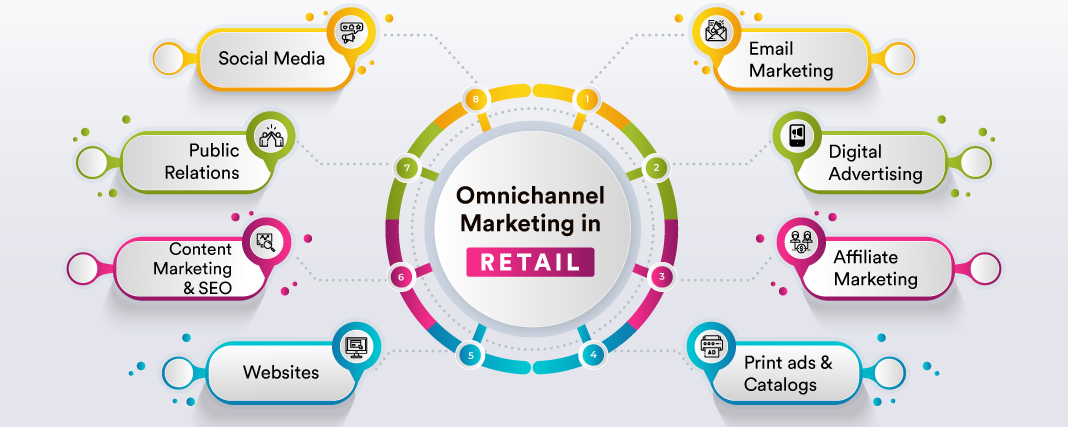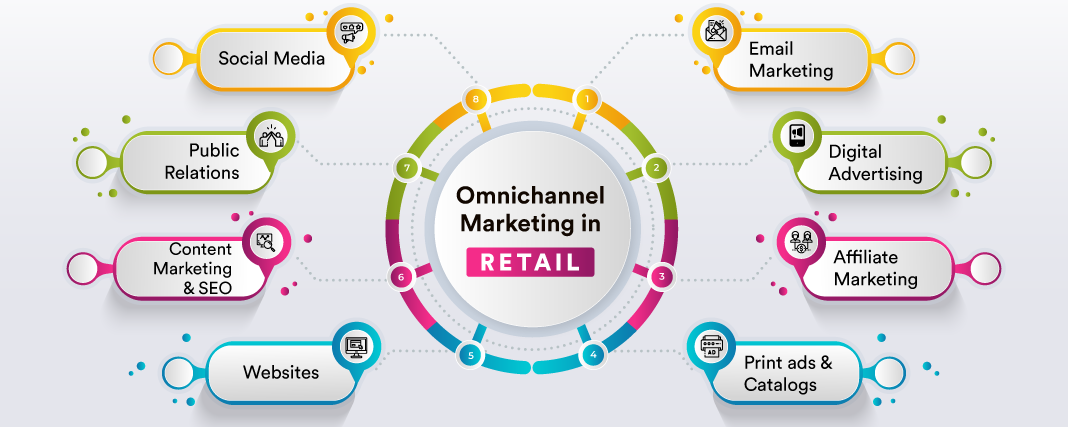
Modern consumers are more connected and in charge of the purchasing process than ever before because to advancements in technology. Companies need to find a means to stay relevant and discover an effective strategy to stand out as the market becomes more crowded and the competition becomes more fierce. To maintain consistency, businesses must assure customers that they offer a seamless user experience across all channels and that the in-store experience is identical to the online one. Because it results in a better overall customer experience, having an omnichannel marketing strategy is a terrific way to stay relevant and competitive in the eyes of your customers.
An Omnichannel Experience: What Is It?
In order to give customers a better buying experience across all channels, the omnichannel strategy is implemented. According to McKinsey, more than one-third of Americans now regularly use omnichannel services like online ordering for in-store pickup. The omnichannel experience is still not widespread, though. The next thing a consumer sees is determined by their activity, and not every customer has the same brand experience, therefore it is based on customer behaviour and engagement.
Customers have various touchpoints via which they can interact and communicate with brands thanks to an omnichannel experience. It strives to produce a positive and equally effective experience on all platforms. This covers point of sale, offline and online experiences, including traditional and digital platforms. A new, app-centric mobile pass system, for instance, qualifies as a communication opportunity, whereas the invitation you send to clients for an in-store event qualifies as a communication event.
The Value of an Omnichannel Retail Strategy
Customers frequently search for information in physical stores while also gathering more details about deals and perhaps lower costs on their mobile devices. Retailers who are just focused on their offline channel, regardless of how well-known their brand is, will miss out on a huge audience given the recent hyperjump in eCommerce adoption. Retailers are given the chance to reinvent their marketing and product strategies as a result of the enormous changes this causes in the retail environment.
Smooth experiences are important to omnichannel retail. Retail marketers must centralise how customers are interacting with their brand across a variety of channels in order to ensure a pleasant and successful outcome in light of the option to purchase in-person or online as well as the rise of social media and review sites. Companies must gather information from numerous sources that may later be combined to give brands a singular image of their clients in order to satisfy customers. Retailers who can track their clients across many channels can give them a better tailored experience.
Creating Magical Memories with Disney
One of the best at creating omnichannel experiences is Disney. Customers may book and arrange their entire trip using the My Disney Experience tool on a stunning responsive website. They can use their smartphone app to find the attractions they want to visit and check the estimated wait times for each of them once they are in the park. The phones of visitors also function as photo storage devices, so if they are photographed on any attraction or with a Disney figure, the picture also shows up on their phone.
Shop for beauty at Sephora
Sephora integrates its customers’ online and in-store purchases, which is what makes its omnichannel strategy so effective. Customers at Sephora adore the “try-to-buy” strategy, so the firm made its stores into “playgrounds” for those who enjoy cosmetics. Technology is used extensively to support the in-store experience. Customers may virtually try on things and read in-store item details from their mobile device thanks to the brand. Customers may also book in-person beauty consultations through Sephora’s mobile app, receive personalised push notifications, and send rich in-app messages.
Uber – Giving Riders More Control
Uber has mastered the art of effortlessly combining two channels that rarely work well together, despite the fact that it only exists as an app and may not appear like a contender for omnichannel marketing success. With on-demand bookings, Uber drivers will arrive where their customers request. Once the consumer is in the car, the service is no longer computerised and they can start speaking to a live person.
Getting the hang of omnichannel marketing
In the modern world, any eCommerce and retail firm must have a robust omnichannel marketing strategy. Whether you sell in-person or online, a true omnichannel marketing strategy must give a consistent brand experience. In order to create a consistent brand identity and customer experience that transcends individual channels and establishes a real omnichannel presence, it is important to meet your customers where they are, develop connections with them, and meet their needs.
Our specialists are always available if you’re interested in having a conversation about how Antavo’s technology may assist your company in developing an omnichannel experience with the aid of a loyalty programme. So please feel free to contact us or request a sample.
